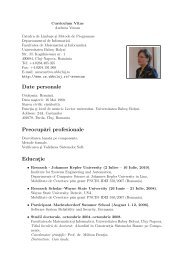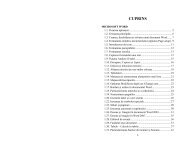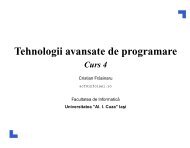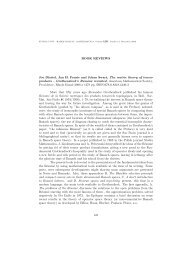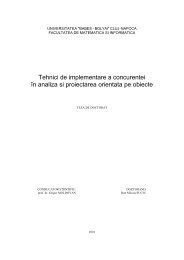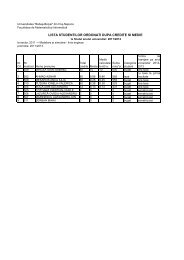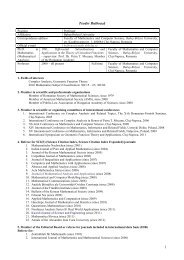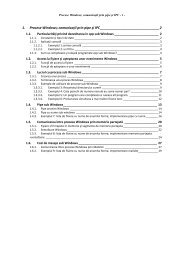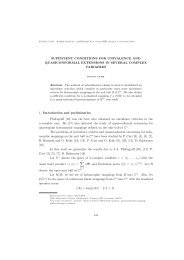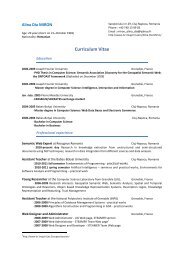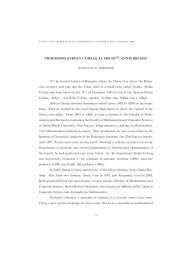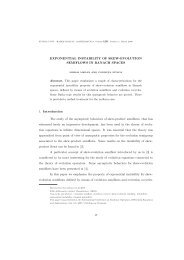CONTENTS
CONTENTS
CONTENTS
You also want an ePaper? Increase the reach of your titles
YUMPU automatically turns print PDFs into web optimized ePapers that Google loves.
204 MILITON FRENT¸ IU (1) AND HORIA F. POP (1)<br />
Theorem. (i) The fuzzy partition ˜ P = {A1, . . . , An} has the minimum value of<br />
the function J(·, L) if and only if<br />
(1) Ai(x 0 ) =<br />
1<br />
n d<br />
k=1<br />
2 (x0 ,Li )<br />
d2 (x0 ,Lk )<br />
(ii) The set of prototypes L = {L , . . . , L n } has the minimum value of the function<br />
J( ˜ P , ·) if and only if<br />
(2) L i =<br />
<br />
j=0 Ai(xj ) 2 j x<br />
p j=0 (Ai(xj )) 2 .<br />
p<br />
With this result, the optimal membership degrees for x 0 to the classes Ai will<br />
be determined using an iterative method in which ˜ J is successively minimized with<br />
respect to ˜ P and L. The process will start with the initialization of prototypes L i<br />
to the values that correspond to the fuzzy membership degrees of the original fuzzy<br />
partition P .<br />
The resulted algorithm, Restrictive Fuzzy n-Means Clustering Algorithm,<br />
follows:<br />
S1 Let us have X and P as given variables.<br />
S2 Determine the initial positions of the prototypes L i according to value of P .<br />
S3 Determine the membership degrees Ai(x 0 ), i = 1, . . . , n, using relation (1).<br />
S4 Determine the new positions of prototypes L i , i = 1, . . . , n, using relation (2).<br />
S5 If the new positions of the prototypes L i are close enough to the former positions,<br />
then stop, else return to step S3.<br />
3. Experiment<br />
We have used the information we had about 19 student software projects to<br />
estimate the cost of a new project (numbered 20). This information refers to the<br />
complexity, reliability, considered difficulty (all three metrics have values between 1<br />
and 5, denoting very low, low, normal, high and very high), number of inputs, number<br />
of outputs, number of files and number of screens). Also, the computed function points<br />
and the cost of these projects are known.<br />
The final partition produced using this 20 × 8 data matrix contains three classes.<br />
All the three classes are well separated. The core elements of the classes have quite<br />
high fuzzy membership degrees, while only a few of elements per class, not members<br />
of the class, have fuzzy membership degrees reasonably large.<br />
We are estimating the cost of project 20 using the projects member of the very<br />
same class project 20 is a member of. Very similar results are obtained using the<br />
other suggested approach, i.e. Restricted Fuzzy Clustering, where we first find the<br />
cluster substructure of projects 1-19 and then embed the 20-th project as an extra<br />
data item in the former fuzzy partition.<br />
.



